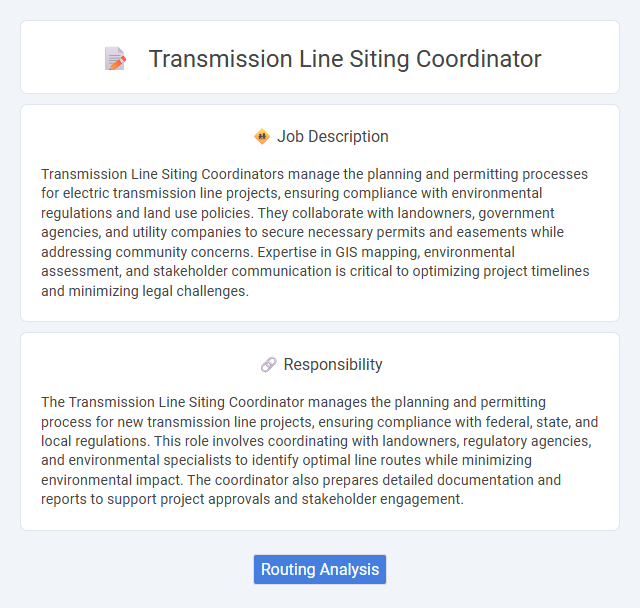
Transmission Line Siting Coordinators manage the planning and permitting processes for electric transmission line projects, ensuring compliance with environmental regulations and land use policies. They collaborate with landowners, government agencies, and utility companies to secure necessary permits and easements while addressing community concerns. Expertise in GIS mapping, environmental assessment, and stakeholder communication is critical to optimizing project timelines and minimizing legal challenges.
Individuals with strong problem-solving skills and the ability to navigate complex regulatory environments will likely be suitable for the Transmission Line Siting Coordinator role. Those comfortable with public engagement and managing stakeholder concerns may find themselves better equipped for the social and environmental challenges inherent in this position. Candidates lacking patience or communication skills might find the job demanding and less fitting for their strengths.
Qualification
Candidates for the Transmission Line Siting Coordinator position must possess a bachelor's degree in electrical engineering, environmental science, or a related field, complemented by proven experience in transmission line project management. Proficiency in regulatory compliance, right-of-way acquisition, and environmental permitting is essential to successfully navigate state and federal guidelines. Strong communication skills and the ability to coordinate with stakeholders, including landowners, agencies, and construction teams, are critical qualifications for this role.
Responsibility
The Transmission Line Siting Coordinator manages the planning and permitting process for new transmission line projects, ensuring compliance with federal, state, and local regulations. This role involves coordinating with landowners, regulatory agencies, and environmental specialists to identify optimal line routes while minimizing environmental impact. The coordinator also prepares detailed documentation and reports to support project approvals and stakeholder engagement.
Benefit
Working as a Transmission Line Siting Coordinator likely offers the benefit of engaging in impactful infrastructure projects that contribute to efficient energy distribution. This role may provide opportunities for professional growth in regulatory compliance and stakeholder communication. Employees probably experience a dynamic work environment that blends technical planning with community interaction.
Challenge
Managing the diverse interests of stakeholders while navigating complex regulatory frameworks likely presents a significant challenge for a Transmission Line Siting Coordinator. The need to balance environmental concerns, community impact, and technical feasibility may frequently require careful negotiation and strategic problem-solving. Coordinators probably face pressure to deliver timely project approvals despite potential opposition and evolving policy requirements.
Career Advancement
A Transmission Line Siting Coordinator plays a crucial role in managing the permitting and environmental review processes for high-voltage power lines, facilitating the integration of renewable energy sources into the grid. Career advancement opportunities often lead to senior project management or regulatory affairs positions within utilities or energy development firms, leveraging expertise in stakeholder engagement and compliance. Mastery of geographic information systems (GIS), environmental regulations, and public policy enhances prospects for leadership roles in infrastructure planning and energy transmission development.
Key Terms
Routing Analysis
The Transmission Line Siting Coordinator specializes in routing analysis to identify optimal paths for new transmission lines, balancing environmental impact, land use constraints, and engineering feasibility. They utilize geographic information systems (GIS) and spatial data modeling to assess terrain, vegetation, and existing infrastructure. Their expertise ensures regulatory compliance while minimizing costs and environmental disruption during the routing process.
 kuljobs.com
kuljobs.com